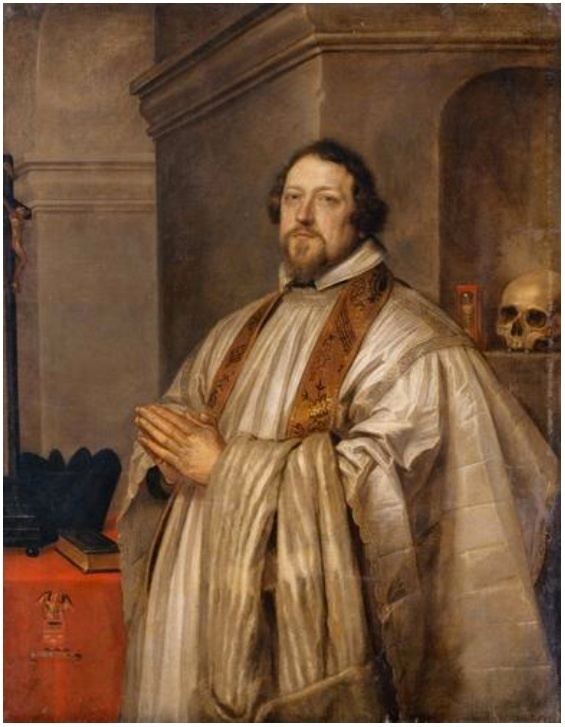Name Frans Denys | Died 1670 | |
 | ||
Frans Denys (name variations: François de Nijs, François de Nis, François de Nys, François Denis, François Denys, François Dannys, François Nijs, Fransois Denies, Donys; first name also: Fransoos and Fransous) (c. 1610, Antwerp – 1670, Mantua), was a Flemish Baroque painter mainly of portraits. After a successful career in Antwerp he became a court painter in Italy.
Contents

Life
He became a master in the Antwerp Guild of St. Luke in 1631. The next year he married Martina Vleckhamers. They had seven children of which one, Jacob, became a painter like his father. Martina Vleckhamers died in 1647.
In the period 1654-1655 he paid reduced dues of 1 guilder to the Guild of St. Luke, an indication of the fact that he had left Antwerp in that period. From 1654 onwards, he was active abroad, first working for the art-loving Duke Frederick III, Duke of Holstein-Gottorp. Subsequently, he went to work in Italy as court painter for Ranuccio II Farnese, Duke of Parma. Later he worked for Archduchess Isabella Clara of Austria in Mantua. This is also his last residence where he died in 1670.
He was the teacher of the painter Jan de Duyts.
The artist should be distinguished from the painter of the same name who was active in Ypres around the turn of the 17th century.
Work
Denys was a successful portrait painter who served an elite clientele in his hometown and abroad. His clientele included mainly aristocrats and townsmen of the middle class. He also made a number of portraits of fellow artists including of Jan van Balen and Alexander Adriaenssen. In his time, he was regarded as being on a par with his contemporaries such as Justus Sustermans. He was seen as a follower Anthony van Dyck because he was a portrait painter of the elite. His work was forgotten until he was rediscovered by the Royal Museum of Fine Arts of Antwerp. The more traditional and severe style of his work probably explains why his work fell into oblivion. He usually depicted his sitters in a sitting or standing position and turned three-quarter. The portraits represent the subjects invariably in static poses. Only in the hands did Denys introduce some variation by painting them in different twisted positions and spreading of the fingers, although these gestures do not appear to bear any specific meaning. The overall setting of the portrait paintings is sober and the focus is on the execution of the faces and representation of the clothing, which is sometimes quite sumptuous. The facial features are usually rather sharp. The portraits show little individual expression while the sitters appear impassive and serious and stare straight ahead.
Only a little over 20 paintings by his hand are known. Of these, about 12 date from his Antwerp period between 1635 and 1653. A Portrait of a Clergyman dated c. 1640 is part of the collection of the Kunsthistorisches Museum in Vienna. The palace of Versailles holds the portrait of François-Paulin de Brouchoven, lord of Vechel and later an alderman of Antwerp, which is signed and dated 1652.
A large number of his portraits were engraved. Some were likely intended for this medium. His oil sketch portrait of Alexander Adriaenssen was likely the basis for the portrait of Alexander Adriaenssen, which was engraved by Antony van der Does for the Iconographia of Anthony van Dyck.
The collection of the Royal Museum of Fine Arts of Antwerp holds a group portrait of surgeons attending an anatomy lesson referred to as The Anatomy Lesson of Dr. Joannes van Buyten. The work was formerly attributed to the Antwerp painter Huybrecht Sporckmans (1619-1690) and dated 1660. Recent research has provided strong evidence that the portrait was actually executed in 1648 by Frans Denys. It is the only painting of the subject of an anatomy lesson known in the Southern Netherlands whereas this subject matter was fairly popular in the Dutch Republic. The painting depicts 17 participants and three others (prelectors or instructors) attending an anatomy demonstration. In the right group in the last row, the first man on the left wears a brown suit instead of a black one like the others. The fact that he appears to bow and gesture may suggest that this person is in fact the artist himself. Alternatively, this figure possibly represents the gildeknaap (guild servant), who was rendered in a different color to distinguish him from the surgeons.
